Students and Sanctuary
Our first stop today was the city of Coimbra and some what unusually we planned on doing some sightseeing around the town and then moving on all in the same day. A bit more energetic than my usual pace. Thus we needed a place to park within walking distance of the city center and in our Aires guide we found an area along the river near the rowing club listed. When we got to it we discovered that this was a very popular spot as there were already over 50 other motorhomes parked there. Coimbra is famous for its University, the third oldest in Europe. We were particular fortunate in the timing of our visit as the academic year was at its end and graduating students were out and about in their traditional dress. For the men black suits and cape, with accent colors to depict their course of study. For the women white shirts, black skirt, black stockings and cape. One of the traditions we read about but did not witness is the burning of the ribbons. Students traditionally tied their books together with ribbons to make them easier to carry, these ribbons are burned at graduation to signify that the students are no longer studying. Today of course the ribbons are purely symbolic and have become part of the traditional dress, we saw many student ribbons for decoration. The old city and University are built on quite a substantial hill and so during our hour long stroll through the narrow old streets we also got a change to ride the public elevator and public funicular that offer resident and students a slightly less energetic means of ascending that hill. We were blessed with a bright sunny day, and in that light the city looked really spectacular when viewed from across the river at our parking spot.
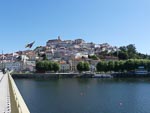
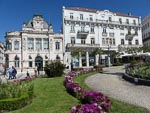
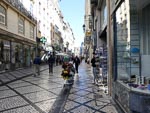
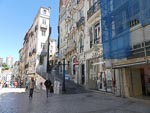
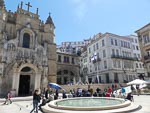
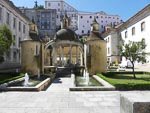
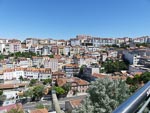
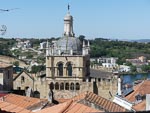
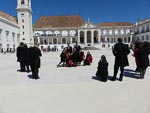
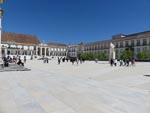
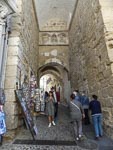
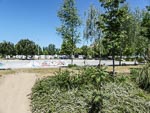
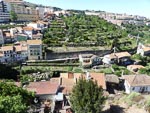
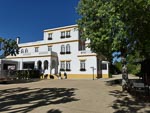
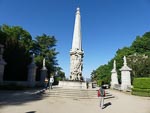
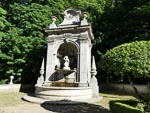
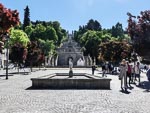
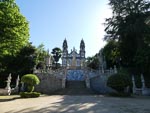
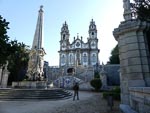
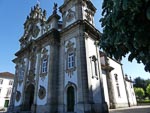
The second part of the day took us to the town of Lamego which we hoped would provided us with a base for exploring the Douro Valley. We picked Lamego simply because it had the only camping ground close to the Douro Valley that we could find but it turned out to be a real gem. The Douro Valley is a major producer of Port Wine and the Valley itself is recommended as a destination in many guide books because of the wine and also because of the spectacular terracing of the land to enable growing of grapes in this very hilly and steeply sloped region.
The first surprise Lamego held for us was the route to the campground. We followed our GPS and some campground signs into a series of narrow roads and eventually found ourselves on a small cobbled plaza next to a large church and associated buildings. Squeezing past the church we descended a series of switchback curves through a forest of very large old trees to eventually arrive at a narrow gate to a picturesque campground built on a terraced lot high up on the side of a valley. The church we had passed was part of the Sanctuary of the Lady of Remedies, that was the second surprise that Lamego held for us. We had not read anything about this Sanctuary but before the day was out we would see that it was a really remarkable complex of buildings, forest and gigantic adorned staircase.
Camping Lamego is, as I have already said, a really picturesque and relaxing spot. The facilities are good and the host and hostess (Nuno and Clara Meneses) friendly and helpful.
We were pleased to discovered that the Sanctuary was only a short 15 minute walk from the campground, with only a modest amount of uphill.